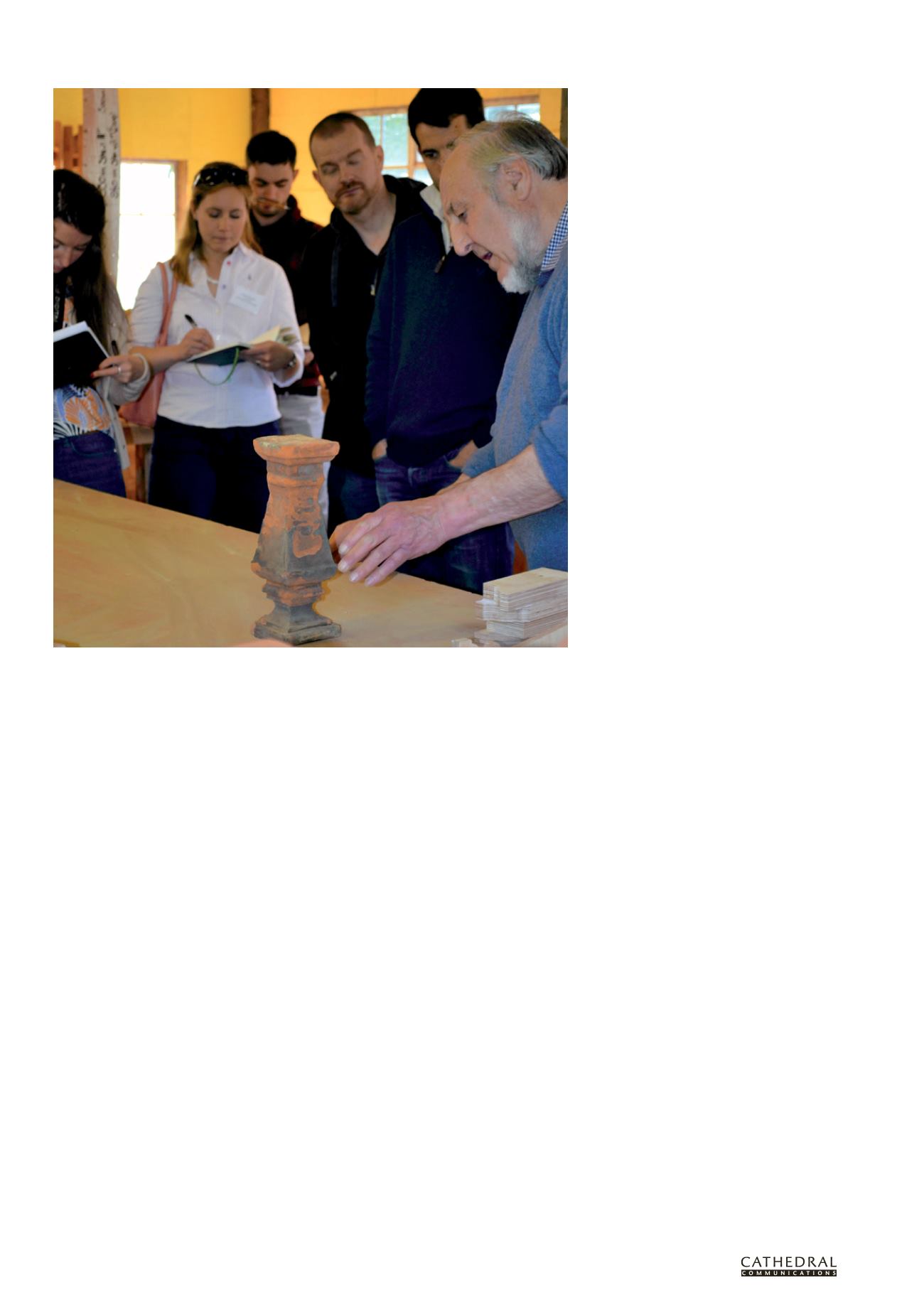

1 8 4
T H E B U I L D I N G C O N S E R VAT I O N D I R E C T O R Y 2 0 1 5
T W E N T Y S E C O N D E D I T I O N
USEFUL INFORMAT ION
6
MAINTAINING ACCREDITATION
Achieving accreditation is typically the
result of years of hard work, but accreditation
also brings with it a commitment to future
learning and professional development.
Periodically, usually every five years, a further
three new examples must be submitted to
the accreditation panel for assessment, so the
onus is on the professional to maintain his or
her status and keep up to date.
The obvious approach is to do this
through CPD and other courses and,
as mentioned, there are many excellent
conservation-based courses across the country
each year (see further information). Staying
focussed and learning fresh information,
however, can be a challenge.
One suggestion would be to assign a
material to each year in the cycle and learn
as much as possible about that material
for a year – bricks in year one, timber in
year two, metal and glass in year three,
and so on. Similarly, studies can be related
to specific projects your office may be
working on. Make the most of working with
buildings of different types or periods.
A key way of maintaining professional
training is to become a member of one of the
specialist organisations and attend their events.
The Ecclesiastical Architects and Surveyors
Association is a good example, and indeed
many dioceses insist that architects wishing
is regulated through peer assessment
with a lay person to review decisions, the
whole profession is self-monitoring and
able to maintain the highest standards.
Achieving accreditation is demanding
– it should not be easy – but once it has
been achieved, the sense of worth and
extra assistance you can give to a project is
inspiring. For those already accredited and
wondering how to keep up with training, it
can be useful to have a yearly focus, or mentor
some younger colleagues and pass on your
knowledge and experience.
Stay passionate and interested, and
question and learn as much as possible
from others met on the journey towards
accreditation. Most of all, keep up to date. The
profession needs new, inspired and articulate
professionals to continue fighting the corner
of the historic environment. Becoming
accredited is a vital step towards this goal.
Further Information
Accreditation Schemes and
Professional Membership Organisations
AABC
www.aabc-register.co.ukCARE
www.careregister.org.ukCIAT
www.ciat.org.uk/en/Join_CIAT/qualifying/specialist-registers/
conservation_register/index.cfm
Icon
www.icon.org.ukCIfA
www.archaeologists.net/regulation/organisations
IHBC
www.ihbc.org.ukRIAI
www.riai.ie/consumer_services/protected_structures/conservation_
accreditation
RIAS
www.rias.org.uk/services/conservationRIBA
www.architecture.
com/RIBA/JoinTheRIBA/
JointheConservationRegister.aspx
RICS
www.rics.org/uk/join/member-accreditations-list/building-conservation-
accreditation
Education and Training
See page 190 for CPD events and page 188 for
longer conservation courses including those
at all university levels. Regularly updated
versions of these listings are available online
at
www.buildingconservation.com.
ASCHB
www.aschb.org.ukCOTAC
www.cotac.org.ukEASA
www.easanet.co.ukICOMOS
www.icomos.org/enIHBC
www.ihbc.org.uk/ed_train/recognised_courses/index.html
National Heritage Training Group
www.the-nhtg.org.ukScottish Lime Centre Trust
www.scotlime.orgSPAB
www.spab.org.ukUnderstanding Conservation
www.understandingconservation.orgWeald & Downland Open Air Museum
www.wealddown.co.ukLUCY STEWART
is an architect and has
been on the AABC register since 2012. She
currently sits on the AABC management
team and board, while continuing to practise
as an architect in Yorkshire. She was an SPAB
Lethaby Scholar in 2009.
Delegates visit The Bulmer Brick & Tile Company in Sudbury, Suffolk as part of an SPAB Repair of Old
Buildings Course in 2014: meeting and talking with craftspeople is one of the best ways to expand your
knowledge. (Photo: SPAB)
to work on churches in their area are active
members of EASA. The ASCHB is a similar
specialist assembly, both are nationwide
groups of like-minded professionals sharing
their knowledge and experience, and both are
acknowledged forums of experts. Likewise, the
Building Limes Forum attracts members from a
wide variety of professional backgrounds, from
students to architects, and hosts an annual
gathering which includes a programme of
expert lectures and tours.
You may eventually decide that you are
especially interested in a particular technique
or material, and you become the expert being
asked to give lectures and write articles. This
gives you a privileged opportunity to be the
one disseminating knowledge and advice, but
of course you will always be learning from
others as well. One of the best ways to learn is
to teach. Taking on the challenge of helping
younger colleagues to gain accreditation can
bring benefits to everyone involved.
STAY PASSIONATE
Without high quality professional training
and conservation accreditation schemes, it
is certain that many aspects of our heritage
would be treated without due regard
for their unique nature. Inappropriate
materials would be specified, historic
details would be lost and insensitive
alterations made. Because accreditation
















